
 This article discusses the changing representation of suicide in selected Japanese literary and visual texts, focusing on four 20th and 21st century novels (Kokoro by Natsume Soseki [1914], The Silent Cry/Man’en Gannen no Futtoboru by Kenzaburo Oe [1967], Norwegian Wood/Noruwei no Mori by Haruki Murakami [1987], and Gray Men/Gurei Men by Tomotake Ishikawa [2012]), and concluding with a brief mention of Sion Sono’s film Suicide Circle (Jisatsu Sakuru, 2002) and the manga it inspired (Jisatsu Circle, Furuya Ukamaru, 2002). The article argues that the discussed texts have departed from the historic/nationalistic notion of suicide as noble death in favour of a more Gothic positioning of the theme. In Gothic, suicide has been conventionalised as a declaration of guilt, a side-effect of madness, an extreme form of self-harm, the ultimate withdrawal from life, and a reason for a ghostly return. In Japanese texts, suicide is at the same time civilised and barbaric, elegant and chaotic. It is a perfectly composed act of ascetic renunciation and achievement of a Buddhist ideal, as well as an unstoppable viral outbreak that threatens all life. It is an act of submission to societal norms, a cry of rebellion, and a call to revolution; a choice of an individual, but also the play of karmic forces bound to be repeated. While proposing a familiar Gothic positioning of suicide in the context of depression, alienation, inertia, defiance against authority, dysfunctional relationships, death instinct, or masochistic submission, the discussed texts, a testament to the convergence of Western and Eastern philosophies in modern Japan, invite us to revisit these Gothic conventions from a transcultural perspective.
This article discusses the changing representation of suicide in selected Japanese literary and visual texts, focusing on four 20th and 21st century novels (Kokoro by Natsume Soseki [1914], The Silent Cry/Man’en Gannen no Futtoboru by Kenzaburo Oe [1967], Norwegian Wood/Noruwei no Mori by Haruki Murakami [1987], and Gray Men/Gurei Men by Tomotake Ishikawa [2012]), and concluding with a brief mention of Sion Sono’s film Suicide Circle (Jisatsu Sakuru, 2002) and the manga it inspired (Jisatsu Circle, Furuya Ukamaru, 2002). The article argues that the discussed texts have departed from the historic/nationalistic notion of suicide as noble death in favour of a more Gothic positioning of the theme. In Gothic, suicide has been conventionalised as a declaration of guilt, a side-effect of madness, an extreme form of self-harm, the ultimate withdrawal from life, and a reason for a ghostly return. In Japanese texts, suicide is at the same time civilised and barbaric, elegant and chaotic. It is a perfectly composed act of ascetic renunciation and achievement of a Buddhist ideal, as well as an unstoppable viral outbreak that threatens all life. It is an act of submission to societal norms, a cry of rebellion, and a call to revolution; a choice of an individual, but also the play of karmic forces bound to be repeated. While proposing a familiar Gothic positioning of suicide in the context of depression, alienation, inertia, defiance against authority, dysfunctional relationships, death instinct, or masochistic submission, the discussed texts, a testament to the convergence of Western and Eastern philosophies in modern Japan, invite us to revisit these Gothic conventions from a transcultural perspective.
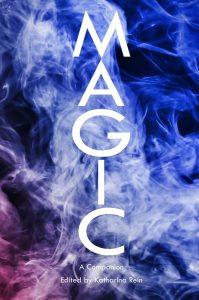 Khmer magic holds a prominent place in Thai imaginary and is often portrayed in films. This article will discuss the most common portrayals of Khmer black magic in Thai popular cinema – from horror films to action and adventure genres. The main films discussed here will be the Art of the Devil trilogy (Khon len khong, 2004, Long khong, 2005, and Long khong 2, 2008), with references also made to such productions like Necromancer (Chom khamang wet, 2005) and Khun Pan (2016) and Khun Pan 2 (2018). The article argues that while the cinematic portrayals of Khmer magic provide opportunities to engage in a graphic spectacle of violence, their depictions are also consequently gendered, with female practitioners being labelled as ‘evil’ and male practitioners using magic to assert their masculinity.
Khmer magic holds a prominent place in Thai imaginary and is often portrayed in films. This article will discuss the most common portrayals of Khmer black magic in Thai popular cinema – from horror films to action and adventure genres. The main films discussed here will be the Art of the Devil trilogy (Khon len khong, 2004, Long khong, 2005, and Long khong 2, 2008), with references also made to such productions like Necromancer (Chom khamang wet, 2005) and Khun Pan (2016) and Khun Pan 2 (2018). The article argues that while the cinematic portrayals of Khmer magic provide opportunities to engage in a graphic spectacle of violence, their depictions are also consequently gendered, with female practitioners being labelled as ‘evil’ and male practitioners using magic to assert their masculinity.
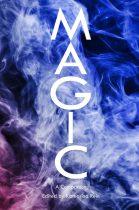
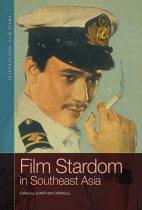
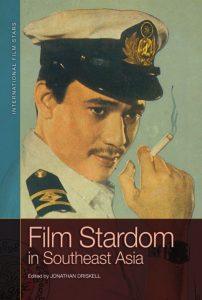 This chapter examines the specific positioning of martial arts stars within cinema and investigates the gendered construction of the female martial artist. It discusses the development of the muay thai film as a specifically Thai contribution to martial arts cinema and the genre’s vindication of the ideological construction of muay thai as an expression of heroic masculinity and patriotism. The chapter focuses on Jeeja Yanin to examine how the introduction of a female muay thai star affects the heroic/nationalistic narrative of Thai muay thai cinema and how this, in turn, affects the construction of Jeeja’s star image.
This chapter examines the specific positioning of martial arts stars within cinema and investigates the gendered construction of the female martial artist. It discusses the development of the muay thai film as a specifically Thai contribution to martial arts cinema and the genre’s vindication of the ideological construction of muay thai as an expression of heroic masculinity and patriotism. The chapter focuses on Jeeja Yanin to examine how the introduction of a female muay thai star affects the heroic/nationalistic narrative of Thai muay thai cinema and how this, in turn, affects the construction of Jeeja’s star image.
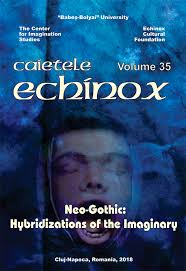 Contemporary Japanese crime writers frequently resort to gothic themes and conventions in their works. This is hardly surprising, since Japanese detective fiction, which dominated Japanese popular literature in the early twentieth century, began as a reaction to nineteenth-century gothic crime stories of writers such as Edgar Allan Poe or Arthur Conan Doyle. This article discusses crime novels of Otsuichi, Natsuo Kirino, and Fuminori Nakamura as examples of Japanese crime gothic, focusing on the Japanese conceptualisation of monstrosity in relation to the figure of the criminal, complementarity of the victim and killer characters, and aestheticisation of violence in the context of Japanese aesthetics of impermanence and imperfection.
Contemporary Japanese crime writers frequently resort to gothic themes and conventions in their works. This is hardly surprising, since Japanese detective fiction, which dominated Japanese popular literature in the early twentieth century, began as a reaction to nineteenth-century gothic crime stories of writers such as Edgar Allan Poe or Arthur Conan Doyle. This article discusses crime novels of Otsuichi, Natsuo Kirino, and Fuminori Nakamura as examples of Japanese crime gothic, focusing on the Japanese conceptualisation of monstrosity in relation to the figure of the criminal, complementarity of the victim and killer characters, and aestheticisation of violence in the context of Japanese aesthetics of impermanence and imperfection.
 If we agree that globalization translates into a quick and massive flow of capital, people, products, services and ideas across borders then cinema has been a global enterprise since its very beginnings. While local film industries may not share the global distributing potential of Hollywood, this does not mean that their production and post-production methods lag behind. The case of Thai film is not so different here, negotiating the dynamics of the global (e.g. filming equipment, skilled crew, or distribution formats) and the local (e.g. conceptualization, scriptwriting, or narrative formation). Contemporary Thai horror film has long been Thailand’s calling card on international film markets. Known in Thai as nang phi (ghost films), the films remain faithful to their narrow supernatural formula focusing most commonly on the figure of a vindictive phi tai hong (a spirit of the violently dead). Recently, however, the familiar anthropomorphic renditions of ghosts known from older Thai horror films seem to undergo the steady process of de-materialization and de-literalization, challenged through the intervention of technology and reappearing as critically constructed metaphors. This article argues that this change in the way these ghosts are portrayed on film can be seen as a result of the increasing globalization of Thai film industry per se, as well as a reflection on the broader economic, political and social transformations brought about by the powers of globalization in Thailand.
If we agree that globalization translates into a quick and massive flow of capital, people, products, services and ideas across borders then cinema has been a global enterprise since its very beginnings. While local film industries may not share the global distributing potential of Hollywood, this does not mean that their production and post-production methods lag behind. The case of Thai film is not so different here, negotiating the dynamics of the global (e.g. filming equipment, skilled crew, or distribution formats) and the local (e.g. conceptualization, scriptwriting, or narrative formation). Contemporary Thai horror film has long been Thailand’s calling card on international film markets. Known in Thai as nang phi (ghost films), the films remain faithful to their narrow supernatural formula focusing most commonly on the figure of a vindictive phi tai hong (a spirit of the violently dead). Recently, however, the familiar anthropomorphic renditions of ghosts known from older Thai horror films seem to undergo the steady process of de-materialization and de-literalization, challenged through the intervention of technology and reappearing as critically constructed metaphors. This article argues that this change in the way these ghosts are portrayed on film can be seen as a result of the increasing globalization of Thai film industry per se, as well as a reflection on the broader economic, political and social transformations brought about by the powers of globalization in Thailand.
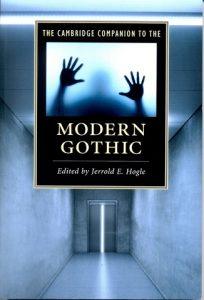 The chapter argues that the search for Asian Gothic should be a three-directional quest: a re-examination of classic texts from the perspective of existing theories about the Gothic; an investigation of the concept of the Gothic from the perspective of self-defined Asian Gothic authors; and a re-categorization of some contemporary pop-cultural forms, such as film, music, manga, anime, visual arts, or street fashion as “Gothic,” leading to a further appropriation of the term by various Asian cultures. All of the above can only be achieved if we abandon the narrow understanding of the Gothic as a distinct literary genre and opt for a more flexible and multidisciplinary use of the term instead.
The chapter argues that the search for Asian Gothic should be a three-directional quest: a re-examination of classic texts from the perspective of existing theories about the Gothic; an investigation of the concept of the Gothic from the perspective of self-defined Asian Gothic authors; and a re-categorization of some contemporary pop-cultural forms, such as film, music, manga, anime, visual arts, or street fashion as “Gothic,” leading to a further appropriation of the term by various Asian cultures. All of the above can only be achieved if we abandon the narrow understanding of the Gothic as a distinct literary genre and opt for a more flexible and multidisciplinary use of the term instead.
 This article discusses the changing representation of suicide in selected Japanese literary and visual texts, focusing on four 20th and 21st century novels (Kokoro by Natsume Soseki [1914], The Silent Cry/Man’en Gannen no Futtoboru by Kenzaburo Oe [1967], Norwegian Wood/Noruwei no Mori by Haruki Murakami [1987], and Gray Men/Gurei Men by Tomotake Ishikawa [2012]), and concluding with a brief mention of Sion Sono’s film Suicide Circle (Jisatsu Sakuru, 2002) and the manga it inspired (Jisatsu Circle, Furuya Ukamaru, 2002). The article argues that the discussed texts have departed from the historic/nationalistic notion of suicide as noble death in favour of a more Gothic positioning of the theme. In Gothic, suicide has been conventionalised as a declaration of guilt, a side-effect of madness, an extreme form of self-harm, the ultimate withdrawal from life, and a reason for a ghostly return. In Japanese texts, suicide is at the same time civilised and barbaric, elegant and chaotic. It is a perfectly composed act of ascetic renunciation and achievement of a Buddhist ideal, as well as an unstoppable viral outbreak that threatens all life. It is an act of submission to societal norms, a cry of rebellion, and a call to revolution; a choice of an individual, but also the play of karmic forces bound to be repeated. While proposing a familiar Gothic positioning of suicide in the context of depression, alienation, inertia, defiance against authority, dysfunctional relationships, death instinct, or masochistic submission, the discussed texts, a testament to the convergence of Western and Eastern philosophies in modern Japan, invite us to revisit these Gothic conventions from a transcultural perspective.
This article discusses the changing representation of suicide in selected Japanese literary and visual texts, focusing on four 20th and 21st century novels (Kokoro by Natsume Soseki [1914], The Silent Cry/Man’en Gannen no Futtoboru by Kenzaburo Oe [1967], Norwegian Wood/Noruwei no Mori by Haruki Murakami [1987], and Gray Men/Gurei Men by Tomotake Ishikawa [2012]), and concluding with a brief mention of Sion Sono’s film Suicide Circle (Jisatsu Sakuru, 2002) and the manga it inspired (Jisatsu Circle, Furuya Ukamaru, 2002). The article argues that the discussed texts have departed from the historic/nationalistic notion of suicide as noble death in favour of a more Gothic positioning of the theme. In Gothic, suicide has been conventionalised as a declaration of guilt, a side-effect of madness, an extreme form of self-harm, the ultimate withdrawal from life, and a reason for a ghostly return. In Japanese texts, suicide is at the same time civilised and barbaric, elegant and chaotic. It is a perfectly composed act of ascetic renunciation and achievement of a Buddhist ideal, as well as an unstoppable viral outbreak that threatens all life. It is an act of submission to societal norms, a cry of rebellion, and a call to revolution; a choice of an individual, but also the play of karmic forces bound to be repeated. While proposing a familiar Gothic positioning of suicide in the context of depression, alienation, inertia, defiance against authority, dysfunctional relationships, death instinct, or masochistic submission, the discussed texts, a testament to the convergence of Western and Eastern philosophies in modern Japan, invite us to revisit these Gothic conventions from a transcultural perspective.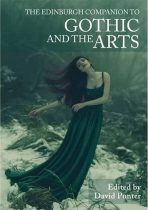
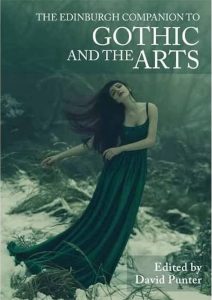 Installation art is always simultaneously material and ephemeral, comprised of tangible objects but also of light, sound, or air. Its existence is always temporary; it is overshadowed by its own death, ready to be dismantled and moved to the afterlife of a photographic or video record. In this sense, it exists predominantly as its own memory. This semi-spectral nature of installation art, seen as a temporary assemblage of parts always on a verge of collapse and disintegration, makes it particularly open to Gothic influences realised trough a choice of themes or conceptualisation of time and space. Although Gothic has never been specifically defined in the context of art, the visual nature of the Gothic aesthetics makes the two compatible. This chapter highlights the work of several twentieth and twenty-first century artists to examine different ways installation art engages with the Gothic. The discussion focuses on the formal qualities of Gothic installations, particularly the construction of Gothic objects and bodies through the use of forms and media that can be seen as impure or abject, and the way these installations evoke the fragmented, oppressive, and disassociated spaces of Gothic and embrace the temporality directed towards memory, history, impermanence, death, and haunting.
Installation art is always simultaneously material and ephemeral, comprised of tangible objects but also of light, sound, or air. Its existence is always temporary; it is overshadowed by its own death, ready to be dismantled and moved to the afterlife of a photographic or video record. In this sense, it exists predominantly as its own memory. This semi-spectral nature of installation art, seen as a temporary assemblage of parts always on a verge of collapse and disintegration, makes it particularly open to Gothic influences realised trough a choice of themes or conceptualisation of time and space. Although Gothic has never been specifically defined in the context of art, the visual nature of the Gothic aesthetics makes the two compatible. This chapter highlights the work of several twentieth and twenty-first century artists to examine different ways installation art engages with the Gothic. The discussion focuses on the formal qualities of Gothic installations, particularly the construction of Gothic objects and bodies through the use of forms and media that can be seen as impure or abject, and the way these installations evoke the fragmented, oppressive, and disassociated spaces of Gothic and embrace the temporality directed towards memory, history, impermanence, death, and haunting.
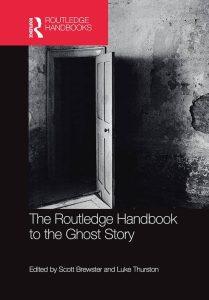 This chapter traces the development of the Chinese-style ghost story in Asian literatures from the classical Chinese genres of zhiguai, and chanqui, through their transformation into Japanese kaidan, to contemporary versions of them. It discusses the structural characteristics and shared themes of such stories, and argues that their modern reincarnations can be divided into reproductions (where contemporary stories are written in a style closely resembling older texts), utilizations (where contemporary authors make use of their audience’s knowledge of the old texts), and hybridizations (where contemporary stories alter older texts, introducing elements of local folklore, modern settings, or other literary influences). As the name suggests, stories of the strange relate to all manner of extraordinary phenomena. To simplify things, the discussion will be limited to the stories that understand ghosts as the returning spirits or souls of the deceased, often taking very material forms in their interactions with humans. The ghosts in question should also be understood as individuals rather than a collective entity, even when they are described as one’s ancestors.
This chapter traces the development of the Chinese-style ghost story in Asian literatures from the classical Chinese genres of zhiguai, and chanqui, through their transformation into Japanese kaidan, to contemporary versions of them. It discusses the structural characteristics and shared themes of such stories, and argues that their modern reincarnations can be divided into reproductions (where contemporary stories are written in a style closely resembling older texts), utilizations (where contemporary authors make use of their audience’s knowledge of the old texts), and hybridizations (where contemporary stories alter older texts, introducing elements of local folklore, modern settings, or other literary influences). As the name suggests, stories of the strange relate to all manner of extraordinary phenomena. To simplify things, the discussion will be limited to the stories that understand ghosts as the returning spirits or souls of the deceased, often taking very material forms in their interactions with humans. The ghosts in question should also be understood as individuals rather than a collective entity, even when they are described as one’s ancestors.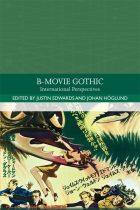
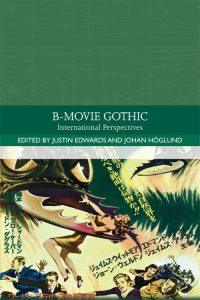 Category III films, introduced to Hong Kong audiences in 1988 as part of the new ratings system, were originally defined as productions reserved for adults over age eighteen. With the majority of plots focusing on stories of murder and sexual exploitation they were often dismissed as mindless low-budget gore-porn created solely for the purpose of generating quick profit for the producers and distributors. Such criticism did little to affect the films’ ratings, as the productions often met with favourable audience reviews and launched mainstream careers of some of their stars. The films also attracted limited academic attention, praised for their naturalistic rendering of the harsh social realities of the lower class life in the 1990s Hong Kong.
Category III films, introduced to Hong Kong audiences in 1988 as part of the new ratings system, were originally defined as productions reserved for adults over age eighteen. With the majority of plots focusing on stories of murder and sexual exploitation they were often dismissed as mindless low-budget gore-porn created solely for the purpose of generating quick profit for the producers and distributors. Such criticism did little to affect the films’ ratings, as the productions often met with favourable audience reviews and launched mainstream careers of some of their stars. The films also attracted limited academic attention, praised for their naturalistic rendering of the harsh social realities of the lower class life in the 1990s Hong Kong.
 The chapter offers a selective survey of twenty-first-century Asian Gothic. The main focus of the discussion is the most prominent contemporary trend involving reconfigurations of Asian folklore and the ghost story. More specifically, this chapter investigates literary and film narratives dealing with individual and collective trauma that revolve around the figure of the vengeful ghost, texts which reclaim animism as inherent part of Asian modernity, and Asian Gothic’s interrogation of gender dynamics and empowered women. The first section of the essay discusses the emergence of the female vengeful ghost as the dominant figure of fear in Asian horror films. The second section examines the portrayal of ghosts in literature of the region and the way their haunting engages with historical trauma and socio-cultural anxieties of the time. The final part investigates narratives that highlight the connection of women to shamanism and magic and proposes to read female spirituality in terms of empowerment.
The chapter offers a selective survey of twenty-first-century Asian Gothic. The main focus of the discussion is the most prominent contemporary trend involving reconfigurations of Asian folklore and the ghost story. More specifically, this chapter investigates literary and film narratives dealing with individual and collective trauma that revolve around the figure of the vengeful ghost, texts which reclaim animism as inherent part of Asian modernity, and Asian Gothic’s interrogation of gender dynamics and empowered women. The first section of the essay discusses the emergence of the female vengeful ghost as the dominant figure of fear in Asian horror films. The second section examines the portrayal of ghosts in literature of the region and the way their haunting engages with historical trauma and socio-cultural anxieties of the time. The final part investigates narratives that highlight the connection of women to shamanism and magic and proposes to read female spirituality in terms of empowerment.